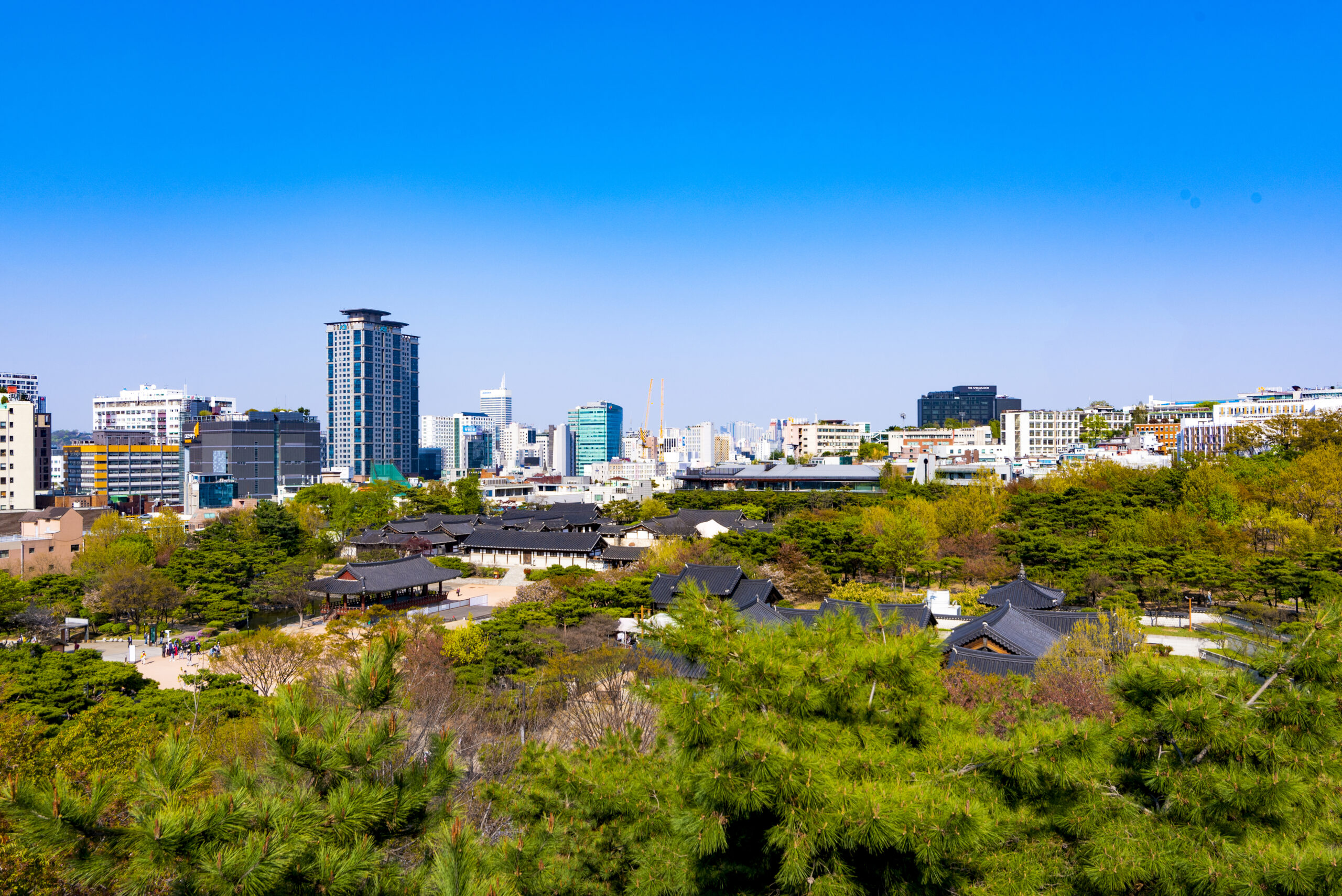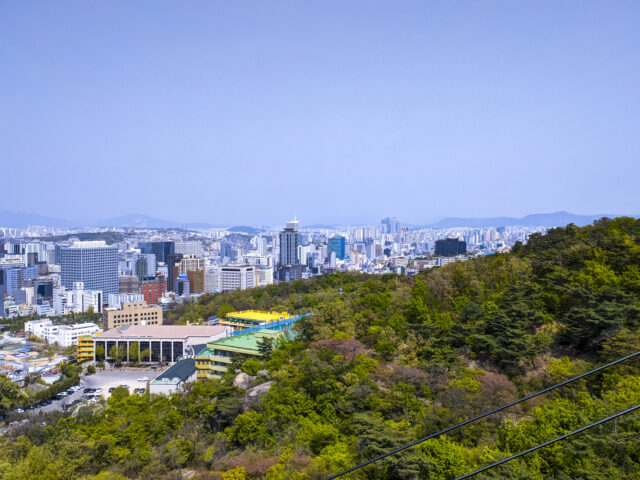3 days in Seoul gives you a lot of flexibility to see wide variety of sites and get to know the city better.
See the detailed tips and itineraries for visiting Seoul.
Day 3 highlights: Gyeonghuigung, Donuimun village, Deoksugung, City hall, Myeongdong, Namsangol village, Namsan tower (if you only have 3 days, visit Banpo Hangang Park in the evening)
If you are able to walk, you can walk among some of the sites. Depending on where your hotel is, you may need to take transport to Gyeonghuigung in the morning, towards late afternoon you can choose whether to walk up Namsan park or take the cable car or a bus up and down the mountain and finally take transport from here to your hotel (use Naver maps for directions)
After two days of exploring historical Seoul, if you no longer wish to visit any more palaces, you can modify the first half of this day – maybe switch it with visiting nearby Namdaemun market, Hongdae, Seoul Forest, National Museum or another of the lovely places of the city. You can find information on any of these sites in my posts for other days of your itinerary.
If, however, you are still willing to explore more of the historical places, do follow this itinerary closely.
Gyeonghuigung
free – closed Mondays
Gyeonghuigung is smallest of the five palaces in the city. It was constructed in the 17th century to serve as a secondary palace for the king to move to in case of need. What you currently see, is only about a third of the former palace and reconstructed in the 1990s.
I personally really enjoyed this palace. We visited exactly at 9am at the time it opened and only saw two groups of people while wondering around the grounds. Hubby was tired of seeing palaces at this point, so he didn’t explore it further, however I happily wondered at the completely empty areas. It was serene.
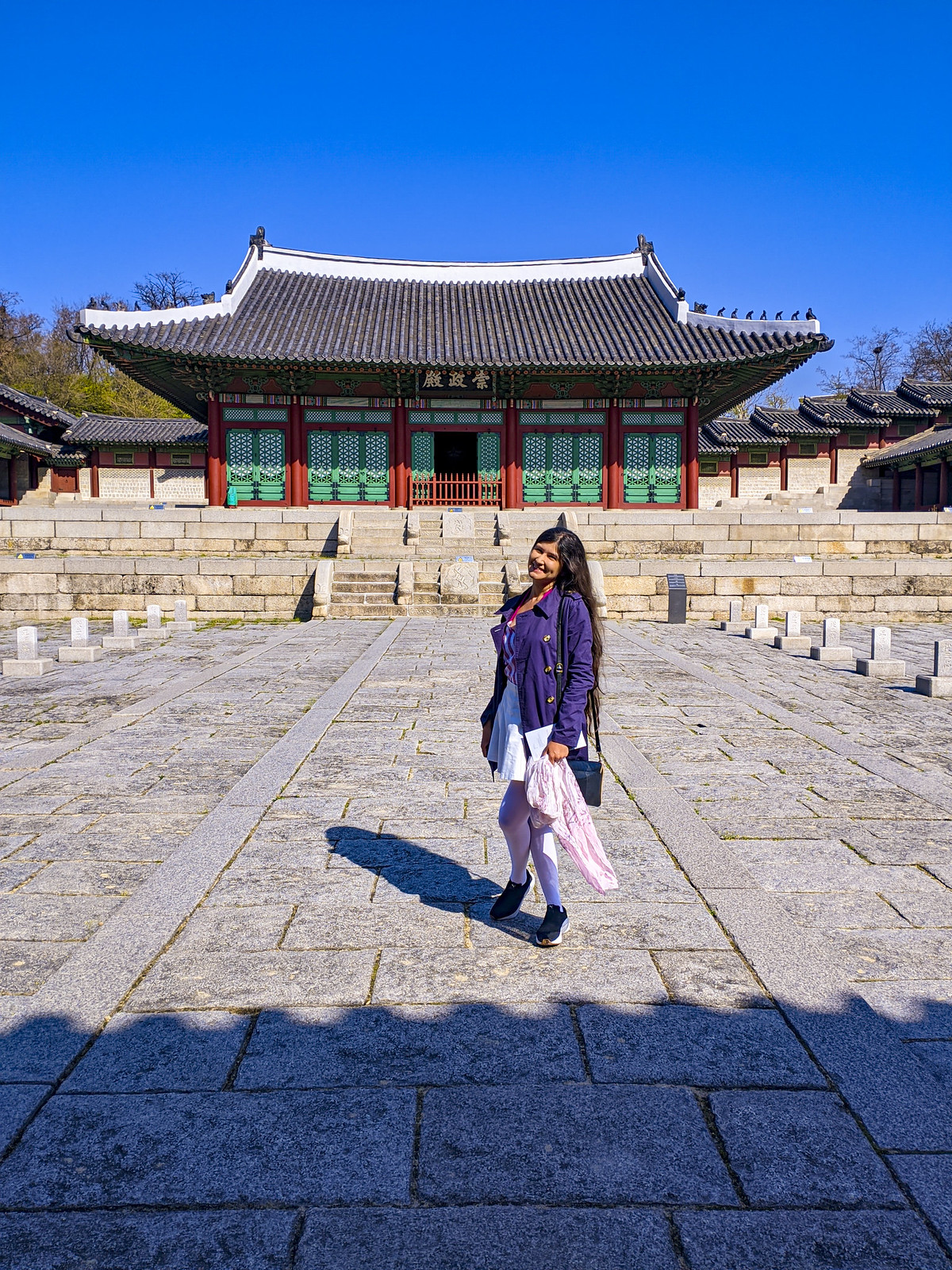
You enter the palace from Heunghwamun Gate. You won’t even need a map, as the buildings are just behind each other. From the gate, you head to the Sungjeongjeon Hall – the main ceremonial hall. The path leading from this hall to others is somewhat different from other palace areas, as you have stairs leading there. Next, you will reach Jajeongjeon Hall, which was used for everyday meetings.
Lastly, you will reach the Taeryeongjeon Hall, its original use was unknown, but subsequently it used to store portraits.
If you have time, nearby the palace is also the Museum of History.
Donuimun Museum Village
free
This village actually is a hidden gem in Seoul. Very few people visit it, whether Koreans or tourists. However, I do believe it is worth your time, as it’s very quirky and different from anything else you will see in Seoul. The museum village showcases the architectural styles and lifestyle of the 20th century (mainly 60s to 80s) – it is also referred to as “100 years of Seoul”.
We looked at the map on walls at the village and explored some of the 40 buildings with various purposes, serving as a club, café, cinema, comic bookstore, Seodaemun photo studio (decorated for a wedding photo shoot), hanok home (House of Three Generations with each floor depicting the life of different generation), a barbershop, music studio and other sites decorated in the 20th century styles. My favorites were the café with the prices of olden times, as well as the club.

When we visited on a weekend day early in the morning, upon its opening at 10am, we were the only ones wondering around and just met one Korean family while we were there. So if you are looking for a different and quiet experience, do come here. I had fun here, feeling like I was looking at the life in the olden times, but hubby got bored very soon.
Jeongdong-gil and Jeongdong Observatory
Free
After leaving the Donuimun village, walk towards the Deoksugung palace direction via Jeongdong street, which is a lovely street lined with gingko trees and I hear is particularly beautiful in Autumn. On your way you will find churches, highs schools, embassies, as well as Jeongdong theatre. You can also pop into Roundnd café (See details in my post dedicated to Seoul cafes).
After this walk along the Deoksugung palace stonewall. This place is popular in K dramas, for instance, you will find it featured more than once in Goblin.
Jeongdong observatory was one of the things I couldn’t find sufficient information about. I just knew it was free, would be best to book, but the website for booking that was suggested everywhere didn’t have a listing for this observatory. So we didn’t manage to pre-book and decided to just show up.
First of all, it only works on the weekends. You will have to arrive before 11.30 (that’s when we arrived and we were lucky to get the last two tickets). The location is not very easy – the building is not exactly on the road, it’s slightly inside and you will be entering from the side entrance (the main entrance doesn’t work). Here is the location. Once you are inside, just approach the receptionist and ask about the Observatory. She will then give you the tickets and direct you to the elevator.
The observatory has nice views over Deoksugung palace and a small café inside, where you can sit and enjoy the view. Honestly, the atmosphere is not very cozy here. All in all, if you don’t manage to get here, don’t be too disappointed. Just pop in if you are in the area at the right time.
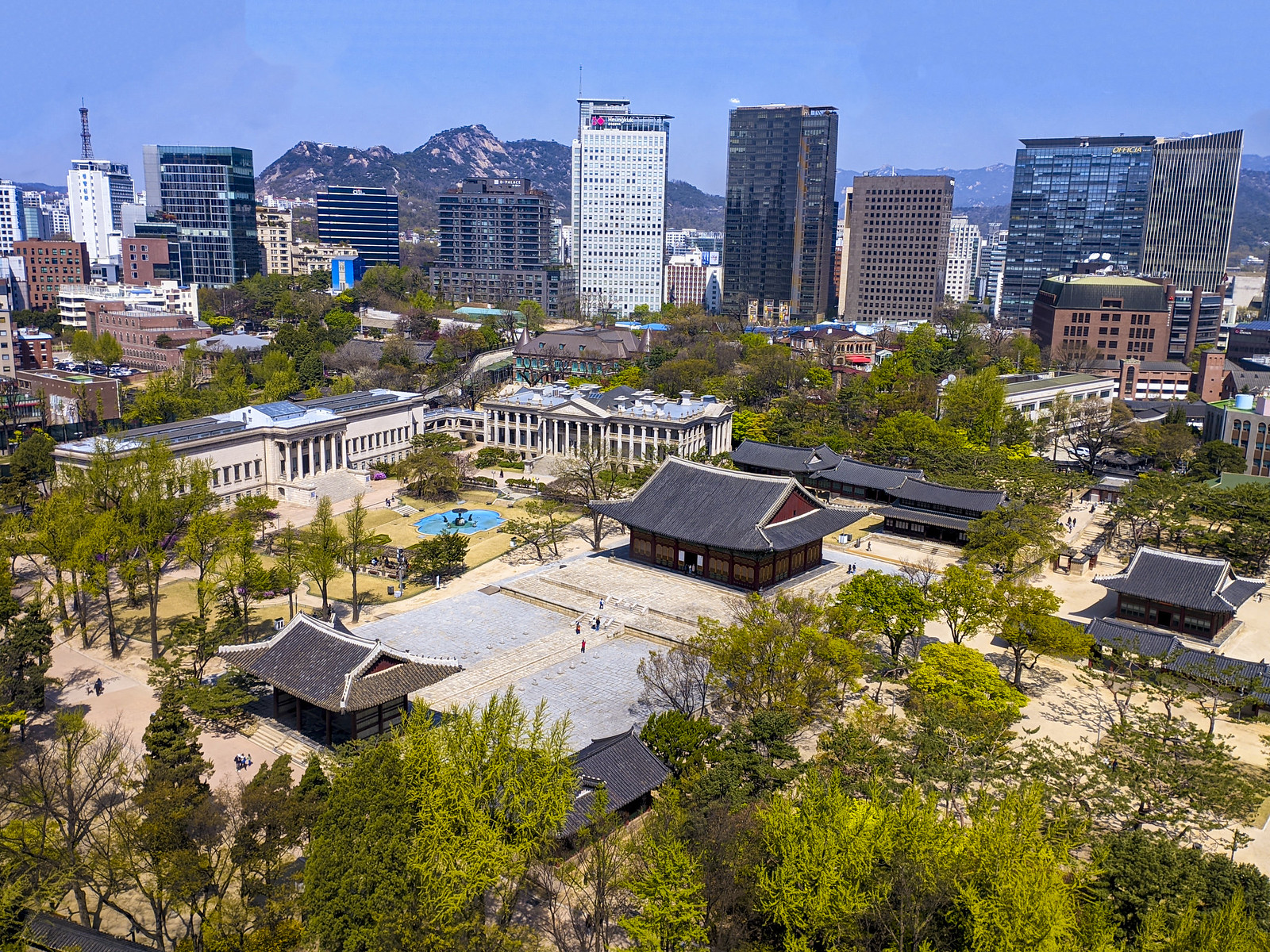
Deoksugung
Price: 1000 won, closed on Mondays
If you are visiting other palaces as well, you may consider buying the Royal Palace pass, which includes admission to 4 palaces and Jongmyo shrine. The pass costs 10000 won. Keep in mind that as with other palaces, admission here is free if you wear a hanbok.
Free Tours
If you like tours, you have an option to join free guided tours of the palace at 10.45 and 13:30. You just have to show up and join the tour. However, it’s first-come first-served, so be there somewhat earlier to make sure you can join.
If you have been following this itinerary, you have already seen 4 grand palaces and Unhyeongung. So you may already be fed up with palaces, unless you are an absolutely history buff and love Joseon dynasty times.
There are a few interesting things about the palace though. First of all, you have Changing of the Guards ceremony here too, which takes place at 11am, 2pm and 3.30 pm. The ceremony starts at the Daehanmun Gate of the palace and head towards Cheonggye plaza.
Another thing you will note here are some western style buildings, such as Jeonggwanheon pavilion built in the beginning of the 20th century and Seokjojeon, which currently serves as Museum of modern art.
The palace gardens are particularly beautiful during the cherry blossom season and in Autumn, when its colorful.
The palace was originally built in the 16th century and its name used to be Gyeongungung and then Seogung (west palace). Like other palaces, it was also damaged several times and rebuilt in 20th century.
Here is the map of the palace grounds. Junghwajeon Hall is the main throne hall used for ceremonial affairs. It is approached by Junghwamun gate, which served, as another entrance to the palace. Hamnyengjeon Hall was king’s living quarters.
Seoul City Hall
Free. Sky plaza operating only on weekdays
I know visiting a city hall sounds quite strange, however, Seoul city hall has some interesting features. This is not a place absolutely not to be missed, however, it is worth having a look. It’s a bland of the old and new buildings with interesting architecture and rooftop views.
The older building was built in 1928 and served, as a City hall since 1945. The modern building modern building next to it was opened in 2012 and the city government moved there. The building has an interesting shape and interior – especially the green wall covering 7 floors. The old building was converted into a library.
Both buildings are currently accessible to the public. The old building has an open roof terrace, from where you can enjoy the views of the area around – it’s not too high, so the views aren’t amazing, but worth checking out. It is entirely free to access, you will simply get into the elevator and go up to the top floor.
Similarly, you can visit the new building. Wonder around and have a look at its interior design.
 Then take the glass elevator to the Sky plaza on the 8th floor. The place is not open, but you have views through the glass. It served as a cultural space for exhibitions and events, as well as has a café. As we visited the Sky plaza during the weekend, it was not accessible to the public, so come on a weekday if you want to see it.
Then take the glass elevator to the Sky plaza on the 8th floor. The place is not open, but you have views through the glass. It served as a cultural space for exhibitions and events, as well as has a café. As we visited the Sky plaza during the weekend, it was not accessible to the public, so come on a weekday if you want to see it.
Myeongdong
If you have already been in Seoul for a couple of days, you have probably wondered around Myeongdong at least in the evening hours. Now do have a closer look during daytime.
This area is particularly popular with tourists and, hence, somewhat more expensive. It’s cute with narrow walking streets and a lot of cafes and shops. You can just walk around or pop into the Myeongdong Kyoja for some dumplings (this is a very popular place and has queues, but it moves fast). You can also choose among the cute cafes around here. (See details in my post dedicated to Seoul cafes). My favorite in the area is Café SOL.
One of the highlights in the area is the Myeongdong Cathedral – the symbol of Catholicism in Korea. Actually, I knew that there were christians in Korea, but I never expected that it’s so strong in a country with strong Buddhist traditions. Currently, 11% of South Korea’s population is catholic (the number significantly increased in the past couple of decades), while 18% protestant. Taking into consideration that only 22% are Buddhists and 45% don’t practice any religion, these numbers are huge and make Christianity the largest religion. It particularly developed here in the 19th century, despite being targeted by the Joseon dynasty for neglecting ancestral worship. The cathedral has a museum, where you can learn about history of Catholicism in Korea, it’s a bit boring though, so you might as well read about it at home.

The gothic style cathedral itself was constructed by the end of the 19th century. You can enter the cathedral either by walking up the stairs, or through the shopping mall underground. Another surprised was seeing that there are a number of shops and cafes in the underground area of the cathedral.
You can explore the brick building of the cathedral, as well as mosaic windows. Then have a look around its yard. One interesting thing we found here is the statue of Jesus standing next to the cathedral, is depicted, like a Korean (his face features).
Namsangol Hanok Village
Free, closed on Monday
After exploring Myeongdong area, walk towards nearby Namsangol village. This Hanok village opened to the public in 1998. It featured 5 Hanok houses belonging to aristocrats and officials, which were originally located in different parts of the city and were rebuilt here with original materials. They show the living environment of Joseon times from the kitchens to studies to bedrooms. In addition to these houses, you will find a pavilion and a garden here.

You can also participate in various activities, such as art workshops, martial art, pottery, wearing hanbok and so on for a fee.
Interestingly, Seoul Millenium time capsule is located here. In 1994, on 600th anniversary of the city, 600 items depicting current life of Seoul were put in the capsule to be opened after 3 millennia, in 2394.
We actually enjoyed it even more than Bukchon Hanok village. Unlike its more popular peer, this village doesn’t have amazing views, however, the depiction of houses with all the items being used in olden times was very interesting to see. It is a very nice area for strolling around and learning about the lives of people during Joseon dynasty reign. Plus, this village is less on the tourists’ radar for some reason.
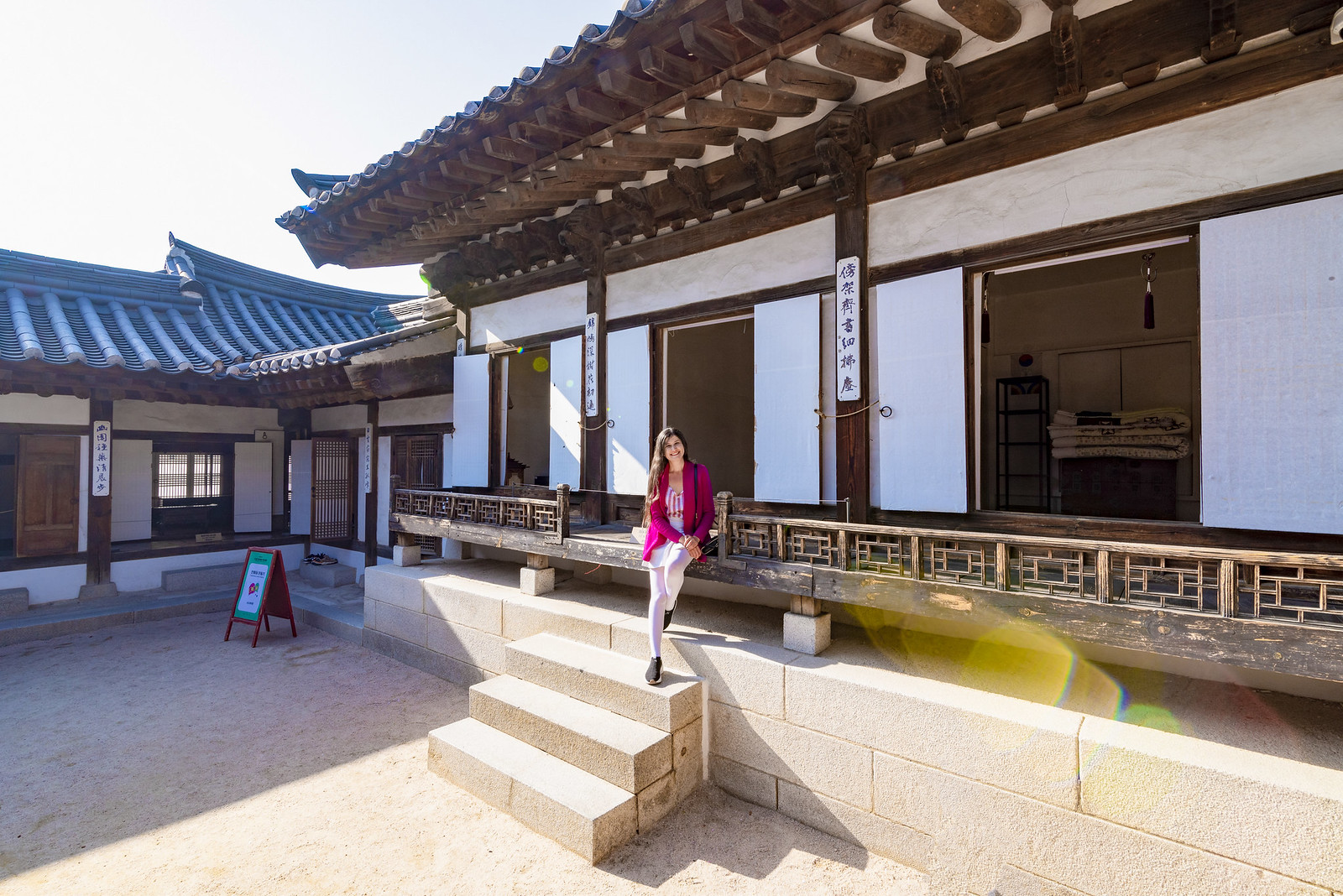
Namsan park and Tower
Observation Deck Price: 21,000 won
After Namsangol village, choose one of the three ways to go up Namsan mountain. The best time to visit the Namsan park and tower is in the late afternoon-evening in order to enjoy the day views, sunset and the night views. Find detailed information on how to visit and what to see in my dedicated post.
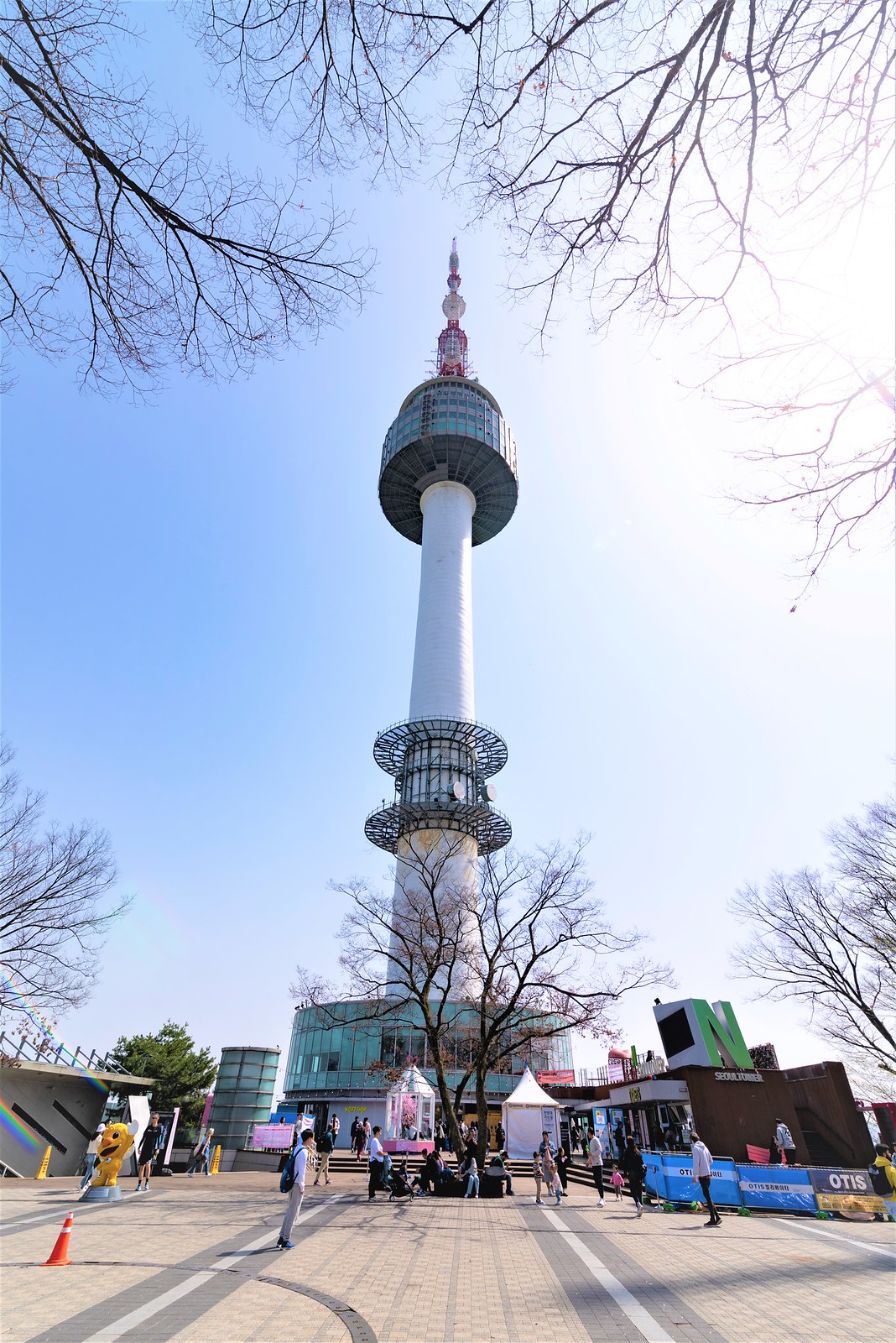
After another long day, come down from the tower either to Myeongdong or Itaewon side and, if you still have energy, enjoy these areas at night.
Alternatively, you can hop on the bus and do a Han river night cruise (the boats generally depart from Yeouido and you can see further details on the official website of the Eland cruise). You can see Banpo bridge fountain show from the boar or visit Banpo Hangang park (see detailed information about this below).
See also:
Suggested 1-day itinerary for visiting Seoul.
Suggested 2-day itinerary for visiting Seoul.
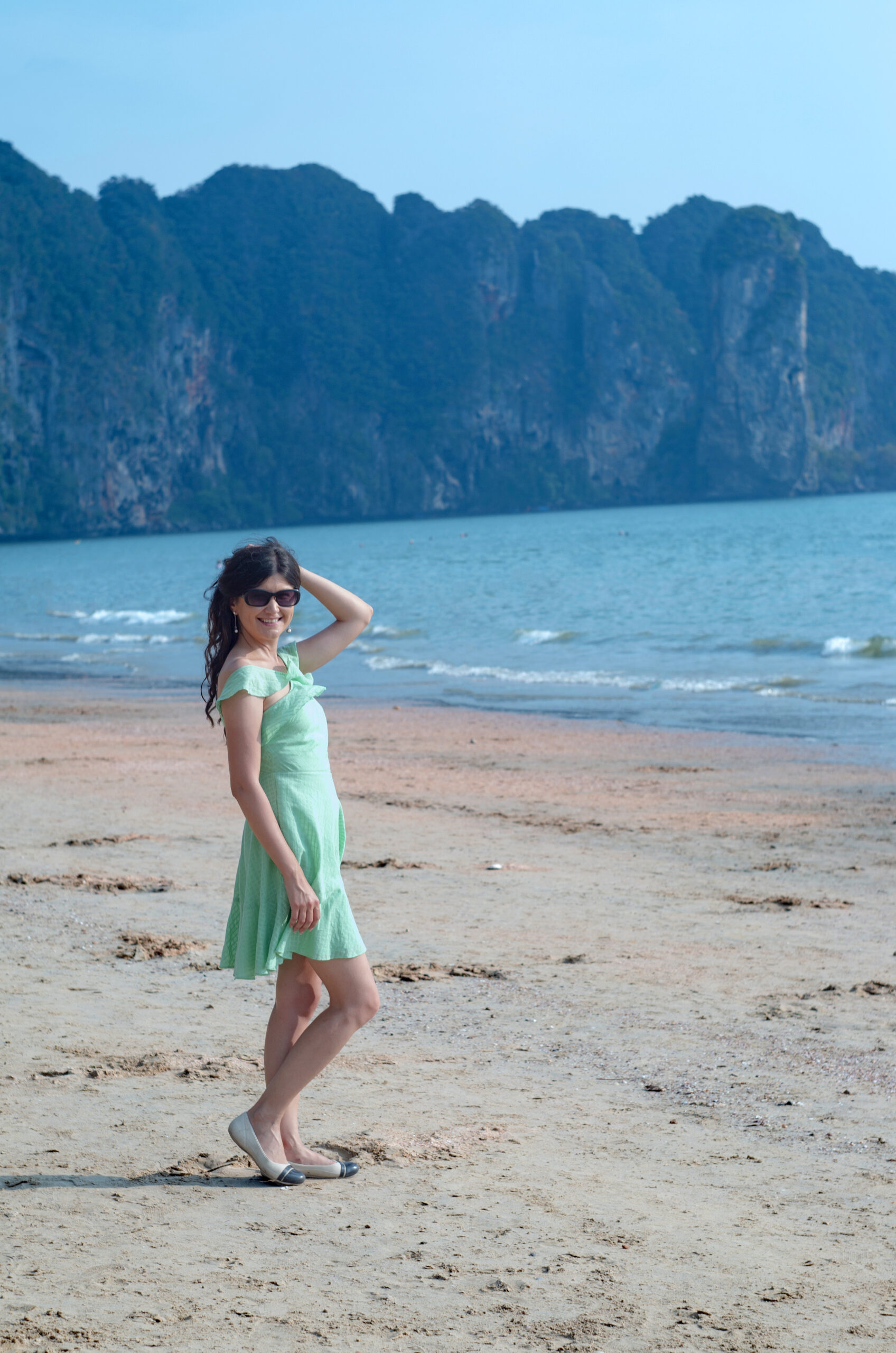
Hello I am Ket,
A traveler, planner, and sweet tooth behind Hit the Road Ket.
Travel isn’t just my passion – it’s a lifeline for my mental health. Having lived in three cities and explored 60 countries (and counting!), I created this blog to share my experiences, smart tips, and itinerary advice with fellow travel lovers. I’m all about making the most of limited time, finding scenic routes, and turning every trip into something memorable – coffee in hand, of course.
